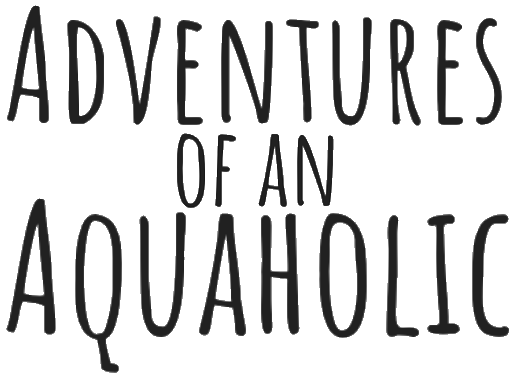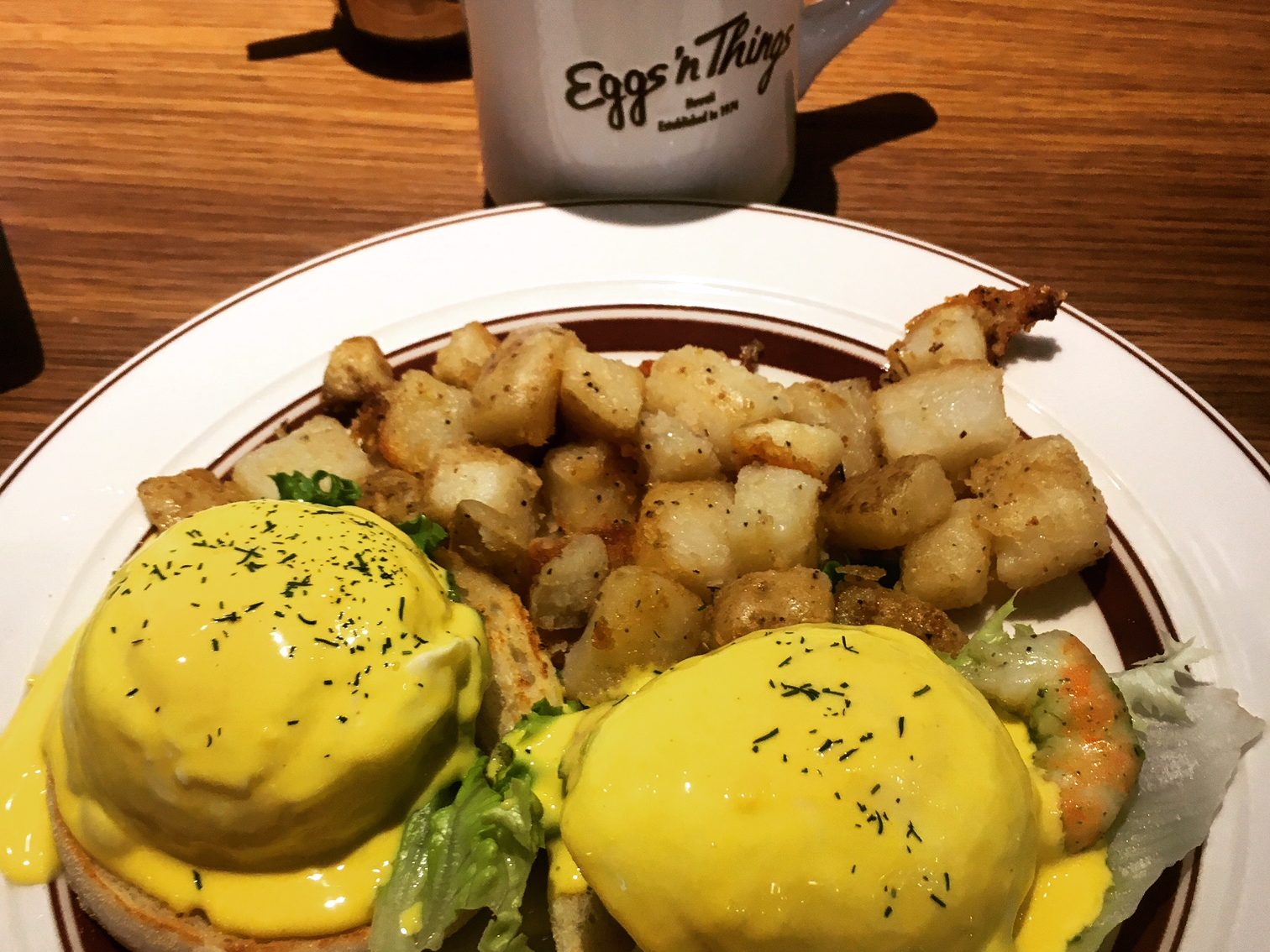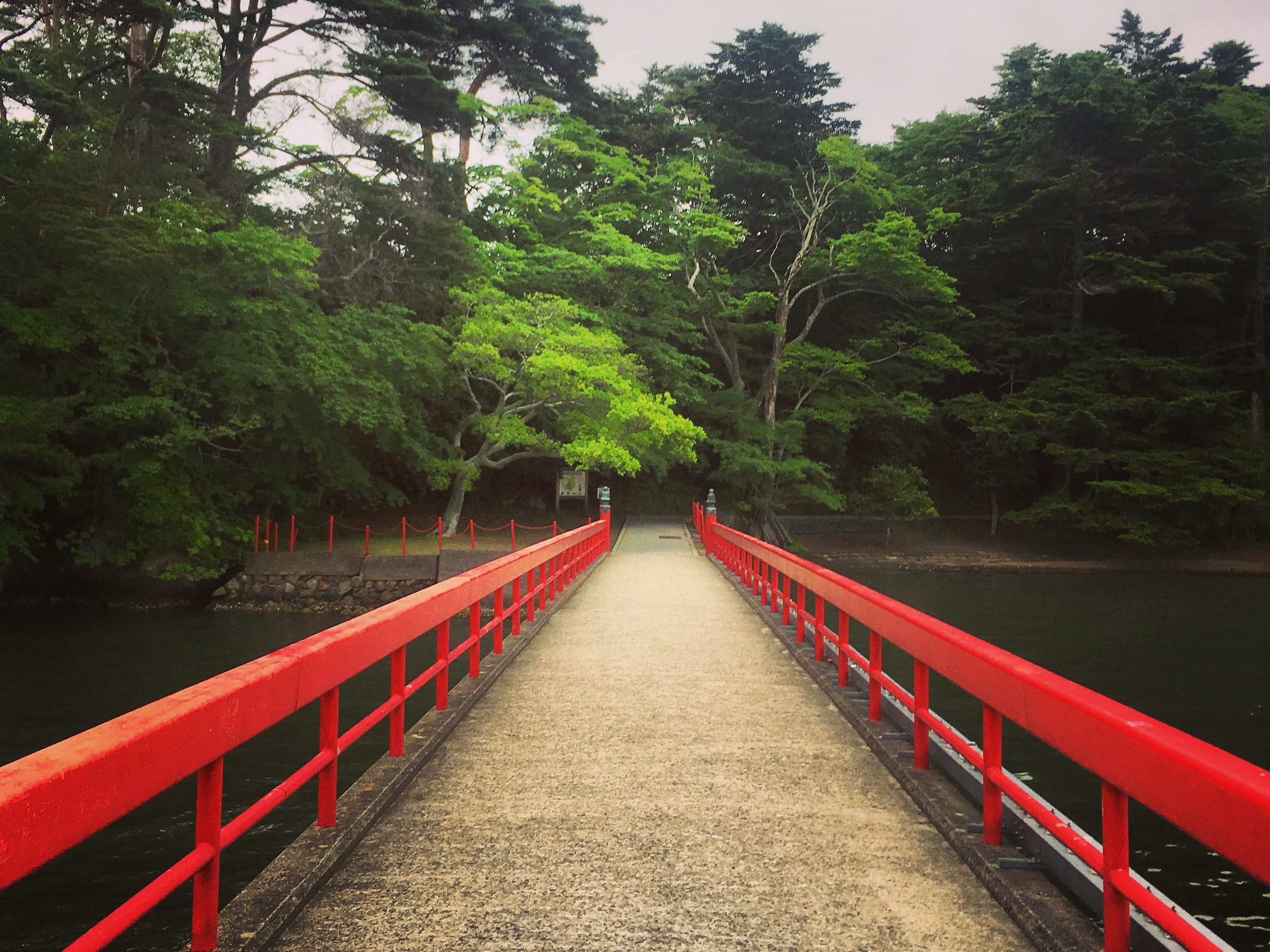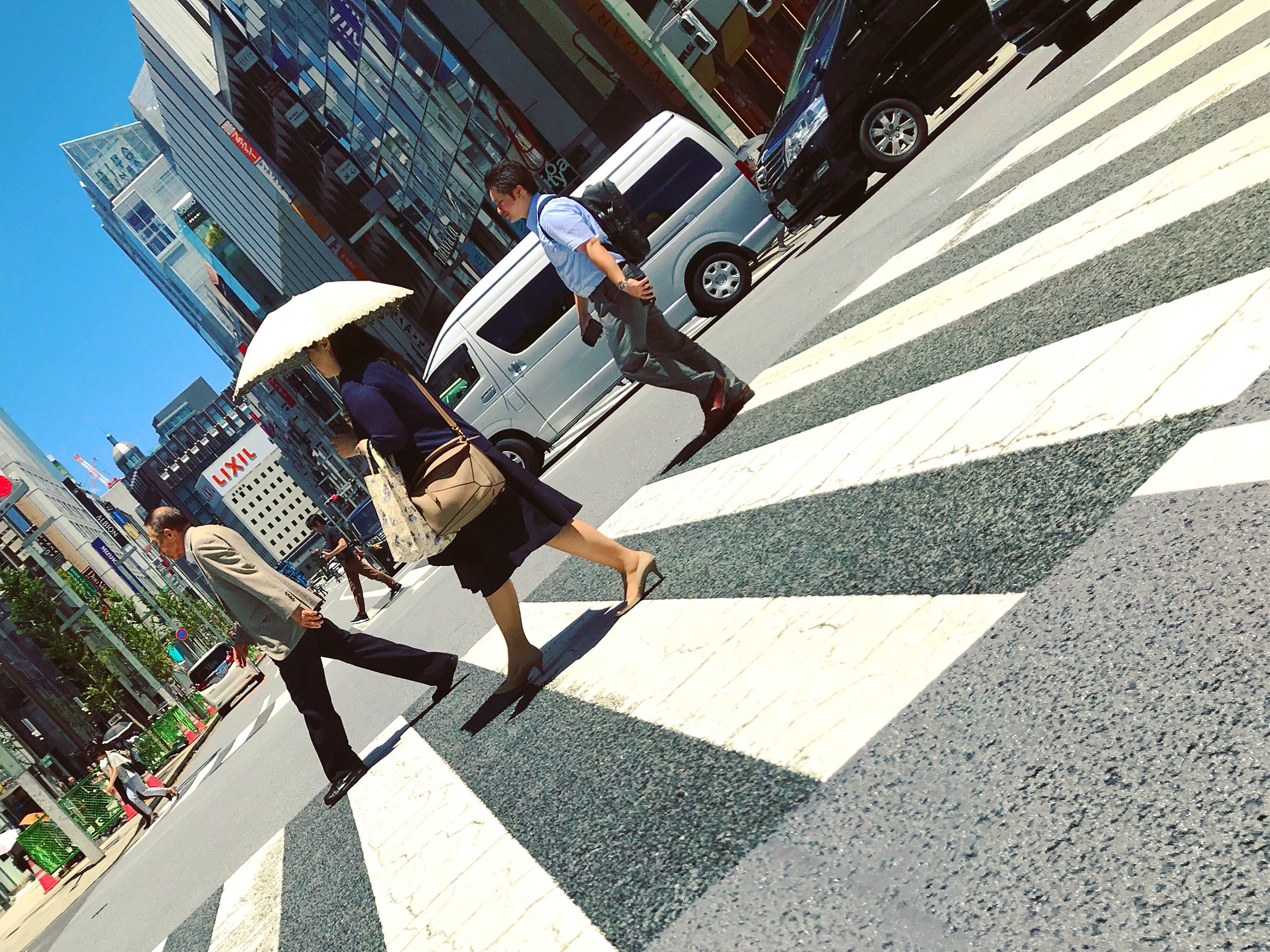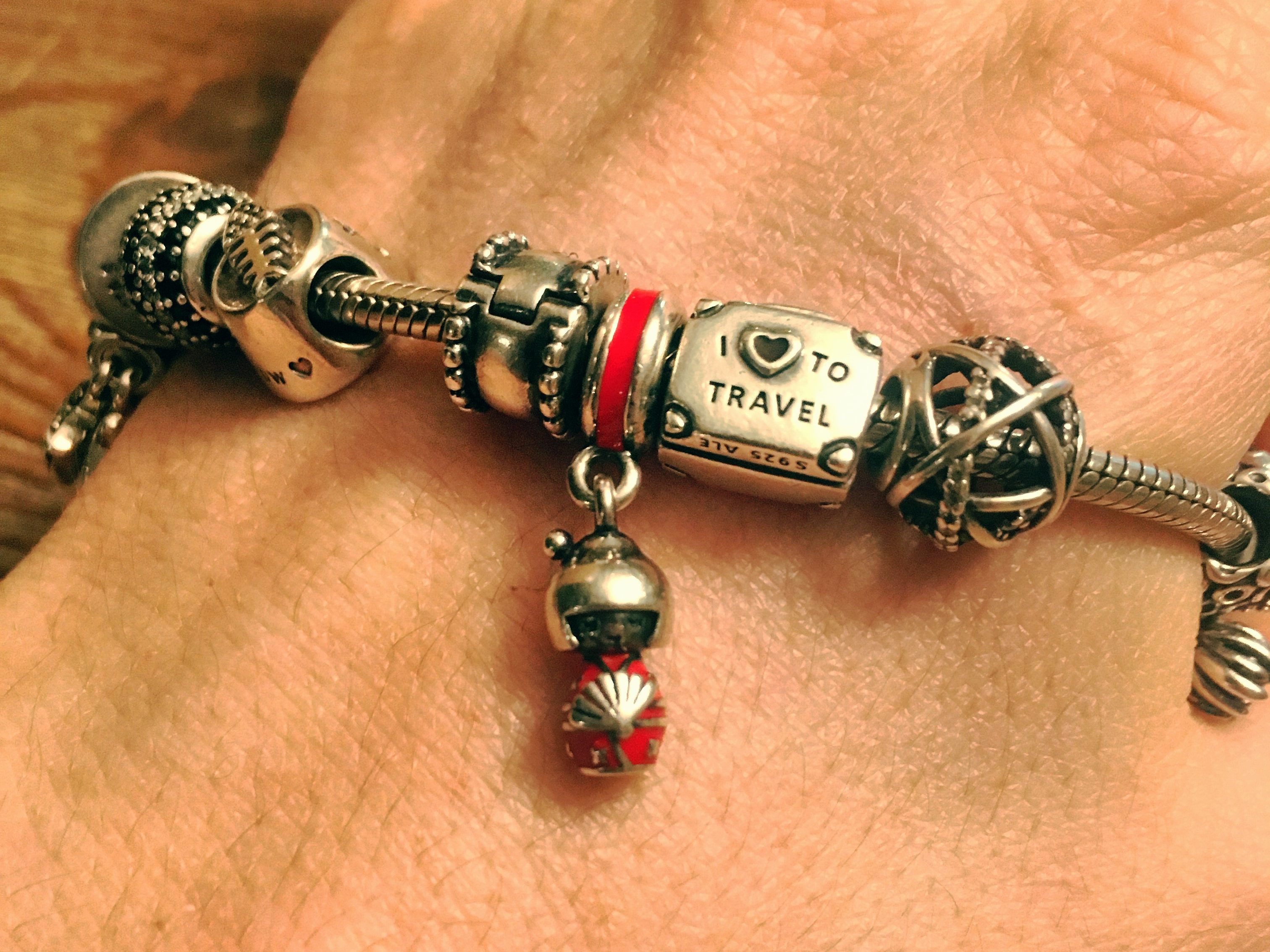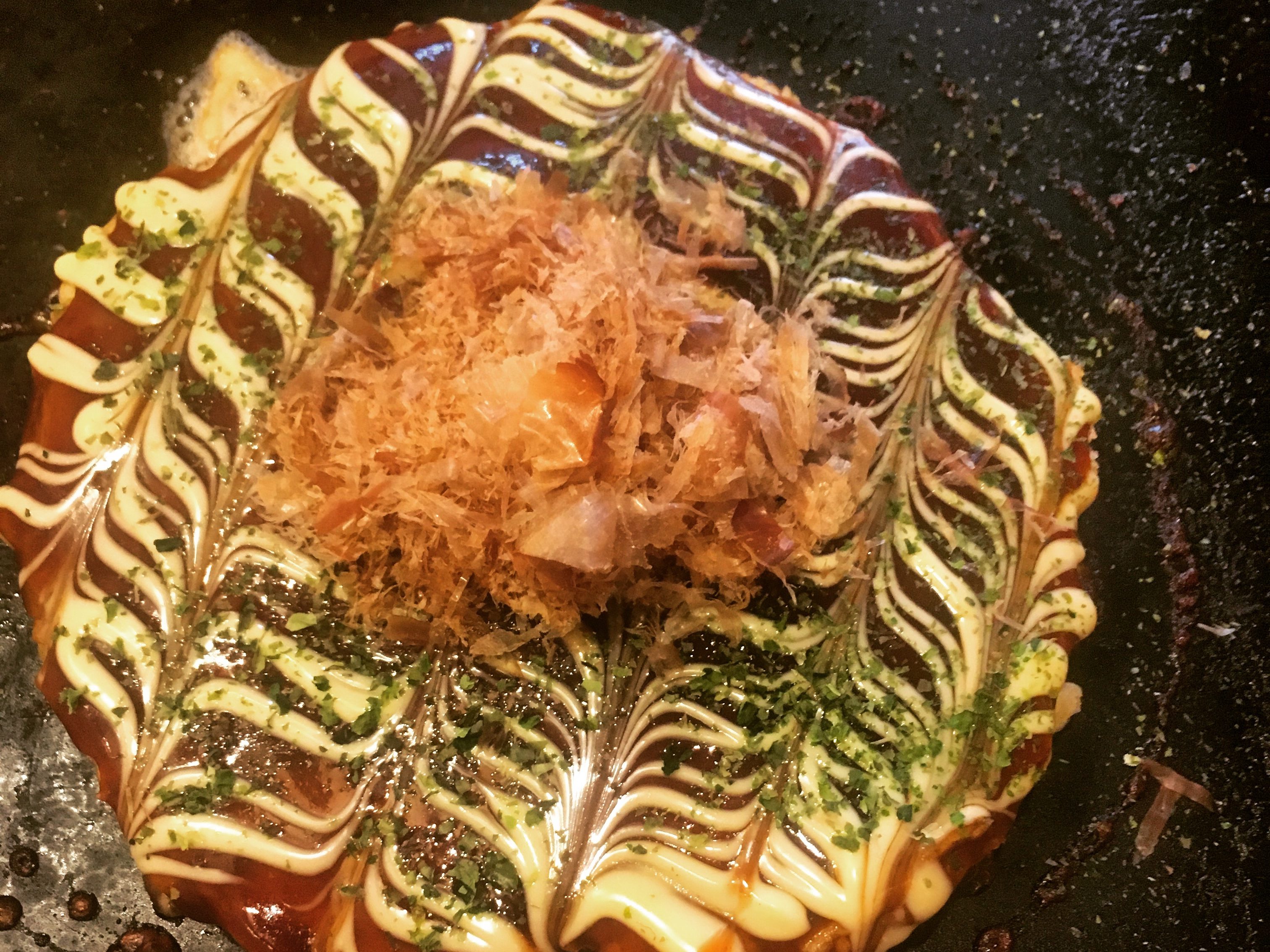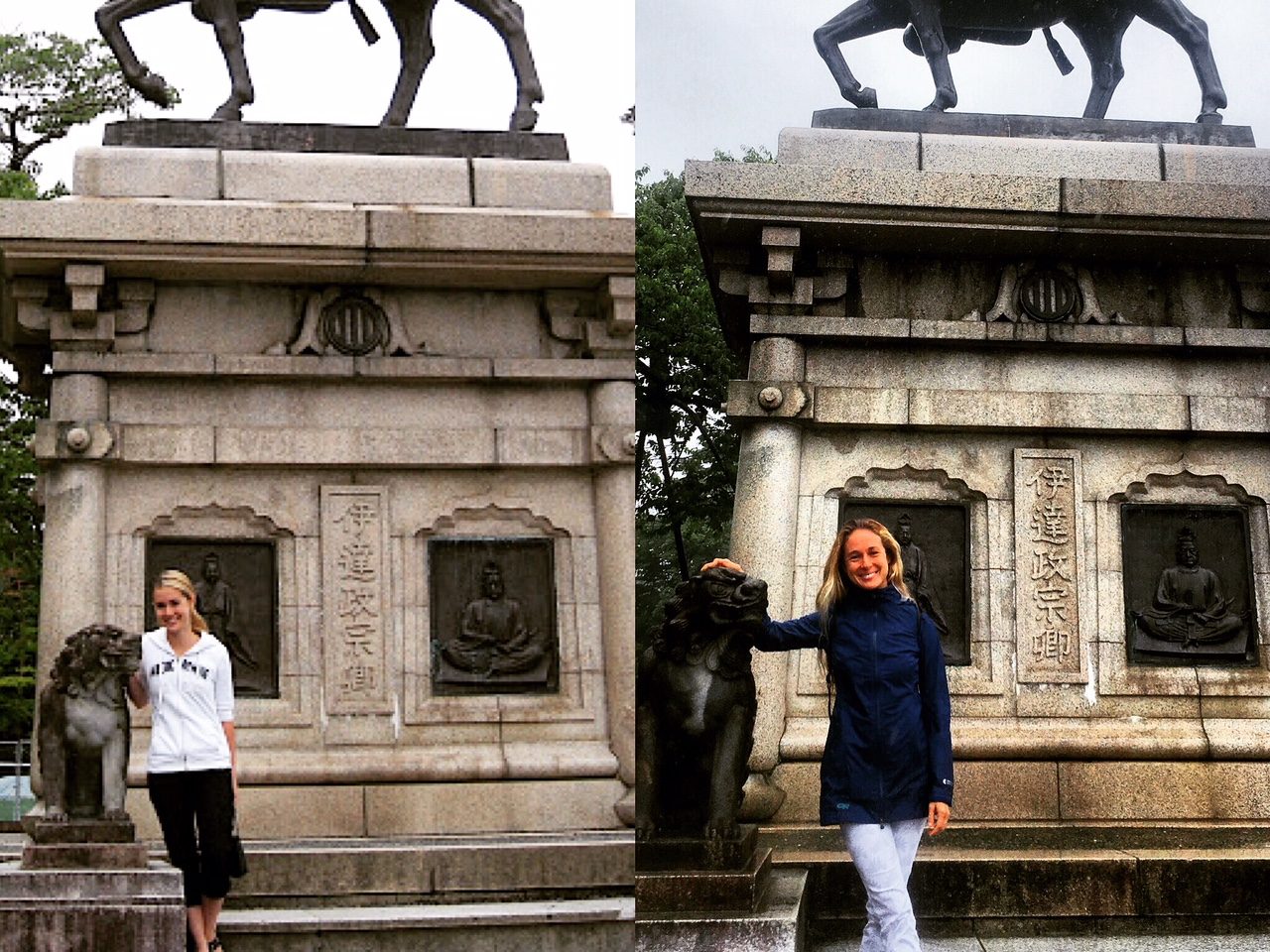
Japan Day 4 – Sendai
Pouring rain was forecast for the entire day, so we decided to do the local sightseeing first, even though it was Monday and that meant that the museums were closed. We could always duck inside some shop in the city if the rain got to be too much. A sudden cold front seemed to have settled over Japan, one that was not on the forecast when I was deciding what to pack. I remembered Japan being hot this time of year. Everything I read said Japan was going to be hot this time of year. So I packed one pair of pants, a pair I would end up wearing for the majority of our first week in Japan, along with my only sweater.
On our way off of the train the previous day, I had spotted a restaurant that had pancakes for breakfast. We decided to check that out first, because in the US, where there are pancakes, there are usually eggs. Not necessarily so in Japan. The restaurant only served pancakes, and while I do love American breakfast, I’m not a fan of starting the day out with sugar. So we decided to browse the train station some more, and as a last resort, Lonely Planet recommended a Manhattan Bakery a ten minute walk away.
The train station was never ending. I picked up an entire book on all the restaurants that were down in the basement. We probably could have spent our entire two days in Sendai just exploring the train station, and still only seen half of it. I mentioned as much to Fletch and he said “OK Sheldon Cooper.” The basement restaurants weren’t open yet. Japan may be the Land of the Rising Sun, but nothing seems to open very early. We decided to find Manhattan Bakery.
I let Fletch navigate as my GPS skills left a lot to be desired. So far Google Maps had put us on the exact opposite side of the block from where we were meant to be, and was constantly rerouting as the GPS was not quite sure where we were between all the tall buildings. Fletch led us down the main street, running away from the train station, which was beautiful and lined with trees. Sendai is after all known as the City of Trees. We then crossed over a block and ended up on a street that was entirely covered and was apparently a strip mall of sorts. Our stomachs were grumbling by this point and when we didn’t immediately find the Lonely Planet-recommended bakery, we kept on walking in search of any restaurant that was open. McDonald’s was the first one we came across. We both silently considered it, without actually admitting that we had considered it until after the fact. Luckily we were saved from the golden arches by another Eggs ’n Things. Thank you Hawaiian restaurant that I will forevermore associate with Japan. I went for the salmon eggs Benedict this time.
With our bellies happy and full, we left the restaurant and continued walking down the covered mall street to hide from the rain, back towards the train station. Along the way Fletch spotted his first Japanese arcade, so of course we had to go in for a look around. Four floors of flashing neon lights and video game beeps and jingles greeted us. The bottom floor was all claw games, where numerous different machines promised everything from minion plushies to electronics. The floors above were all actual games. We had just finished our tour and were about to head back down the staircase when I spotted the only person in the arcade at that early hour. He was standing at a game with a simulation guitar on screen, and six buttons to correspond to the six strings. Whichever string lit up he had to hit the corresponding button. I had to stop fletch to watch for a minute. If this guy had applied his game playing skills to an actual guitar, he would have been famous. His hands were flying around in a blur, you couldn’t even pick out the sounds of individual button taps, and he never missed a beat. We stared, transfixed, until he finished the entire song without a single error, then hurried away before he realized that a couple of white tourists were currently staring at him like he was some exotic novelty.
We made our way over to the bus terminals and bought a couple day passes for the Sendai Loople, a cute little sightseeing bus that looked a bit like a San Francisco cable car, and ran a loop around the city with stops at various tourist spots. For $6 you could hop on and off as many times as you liked in a day. My host mom had brought me on this bus ten years before and that had been one of my more memorable experiences. Unfortunately all the museums were closed since it was Monday, but we could still visit the mausoleums and shrines.
Our first stop was the final resting place of one Date Masamune, a very famous feudal lord of Edo period Sendai, and pretty much synonymous with the city. There is so much to do with Masamune around the city, that ten years later I still remember his name. I can’t tell you how rare that is for me to remember a random piece of history like that. My memory is terrible. He has a very iconic helmet with a massive Nike swish on it.
We walked one block from the bus stop to the base of a very long, steep staircase leading up the side of a mountain, and just like that we left the city behind and were engulfed in woods. A sudden silence accompanied the dim forest, and for a moment, the only sounds were those of the rain pattering on the stone steps and the occasional giggle from the two little old ladies climbing in front of us, who were surprisingly active and agile for their age.
That is the magic of Japan. Being able to walk 100 meters and step from a bustling, modern city, to a tranquil spot in the middle of the woods; to a place that seems like a moment frozen in history, and is almost sacred in a sense.
Date Masamune had a beautiful mausoleum built for himself. Unlike most of the world, who’s countries try to preserve their historical sites in as close to their original condition as possible, until nothing but a crumbling pile of ruins is left, Japan is constantly restoring all of its historical sites so that they look as though they were just built yesterday, with fresh, shiny coats of paint. I thought this was very strange the first time I ever saw the Golden Pavilion in Kyoto, and learned that we weren’t looking at its original gold. After ten years to get used to the fact though, its seems pretty cool to be able to experience these sites as they were back in the day.
| Zuihoden Mausoleum |
We made our way back down the never-ending stone stairs and continued on the bus tour. The next stop was Sendai Castle, the home Date Masamune had built for his clan. The castle was built on a big plateau, 100 meters over the rest of the city. The castle is no longer there, it was bombed during World War II. The stone platform overlooking the city is still there though, with a beautiful view of the entire city. There is also a statue of Date Masamune in his Nike swish helmet. Sendai so far had seemed much less familiar than I had thought it would. I didn’t know if that was because it was mostly rebuilt after the Great Earthquake of 2011, or if it was because my memory was just that bad. Regardless, I remembered this spot very well, and recaptured a couple photos, ten years later.
| View from Sendai Castle |
| Statue of Date Masamune |
| Another statue on the Sendai Castle grounds. |
| Torii gate leading to Osaka Hachimangu Shrine |
| Ringing the bell of the shrine. |
| Torii gate leading back to Sendai city. |
The salad was served with a thin slice of cow tongue, unfortunately shaped exactly like a tongue. I wasn’t quite ready for it to be in front of me already. The last piece of meat I ate was a taste of duck in Palau three years ago. But, no time like the present. I put the tongue on my tongue and surprised myself with how much I liked it. It wasn’t tough or chewy and didn’t have any weird texture like I had imagined. It tasted like a very fine, lean piece of meat. For ten years I’ve wondered what gyutan tasted like. It was nice to finally put that wonder to rest. Thank you, cow.
| Several other beef dishes at Rikyu Ichibancho Yanagi |
We stopped at a liquor store on the way back to the hotel (I’m sensing a trend) to try some more random Japanese drinks. Ciders in general are not good here, they’re too sweet. I was excited to find Savanah Dry. I also found a Beefeaters premixed gin and tonic which isn’t Japanese of course, but I’ve never seen the premixed drink anywhere else. It tasted like a Smirnoff Ice. That hyouketsu beverage that I mentioned before had a line named after different places in the world, so of course I had to pick up the “Texas Style” one. Beneath the english “Texas Style,” the katakana spelled out “orange cowboy.” It did taste just like orange drink.
When we left the liquor store, the wind had picked up in addition to the rain, and our feet were thoroughly soaked, so we were happy to call it a day.
